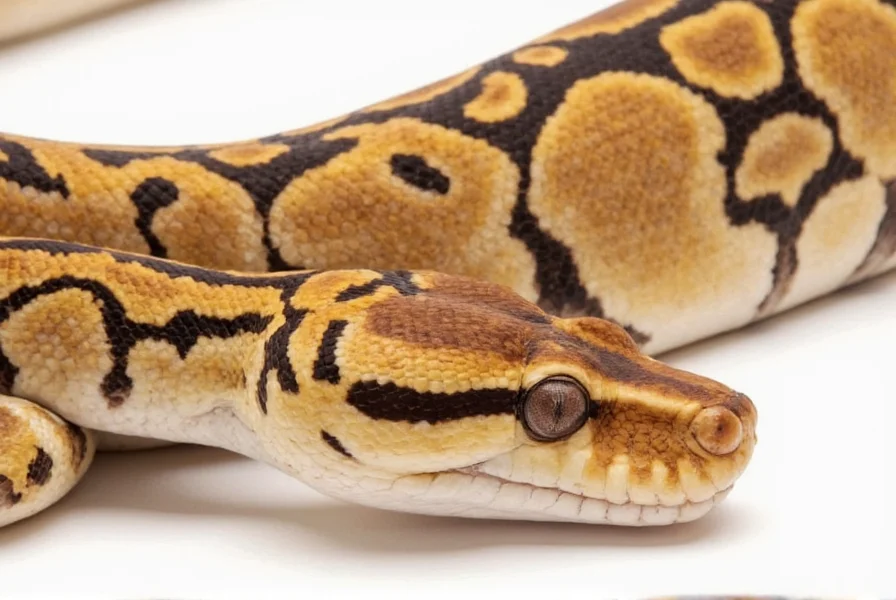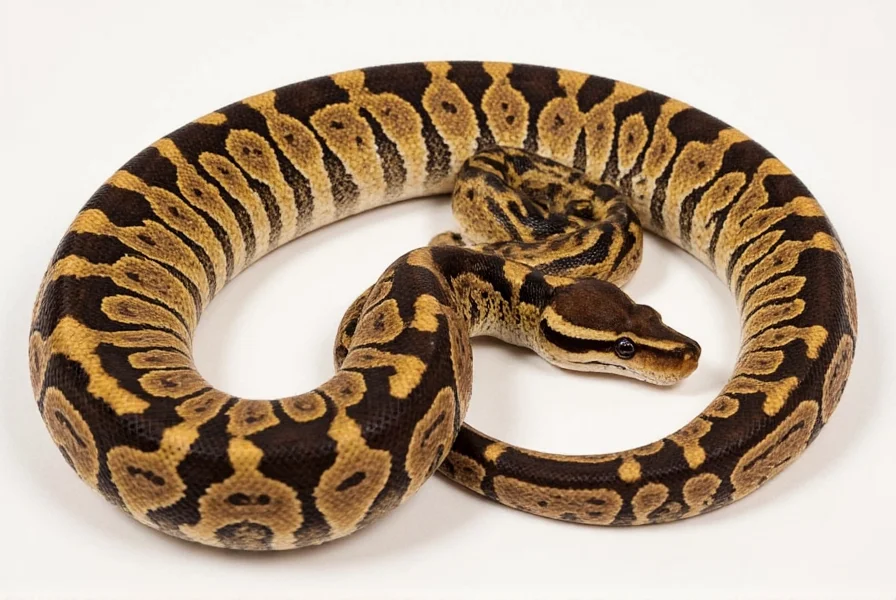The cinnamon royal python, often called a "cinnamon ball python" in the reptile community, represents one of the most visually striking naturally occurring color mutations within Python regius. Unlike designer morphs created through selective breeding of multiple genetic traits, the cinnamon mutation appeared spontaneously in wild-caught specimens and was subsequently established in captivity. This morph's unique coloration makes it instantly recognizable among royal python enthusiasts while retaining all the species' characteristic behaviors and care requirements.
Genetic Foundation of the Cinnamon Morph
The cinnamon mutation operates as a recessive gene, meaning both parent snakes must carry the gene for visual expression in offspring. When two heterozygous carriers (hets) breed, approximately 25% of hatchlings will display the visual cinnamon phenotype. This genetic mechanism explains why cinnamon royals were relatively rare in early collections but have become more accessible as dedicated breeders expanded their bloodlines.
Unlike some morphs that affect pattern structure, the cinnamon mutation primarily influences coloration through altered melanin distribution. Specifically, it reduces eumelanin (black pigment) while preserving pheomelanin (red/yellow pigment), creating that signature warm-toned appearance. This biochemical process occurs without compromising the snake's health or longevity when properly cared for.
Physical Characteristics and Identification
Identifying a true cinnamon royal python involves recognizing several key visual markers that distinguish it from standard specimens and other morphs:
| Feature | Cinnamon Royal Python | Standard Royal Python |
|---|---|---|
| Base Color | Warm caramel to reddish-brown | Light to medium brown |
| Pattern Color | Rich chocolate brown | Dark brown to black |
| Pattern Contrast | Moderate (less stark) | High (sharp contrast) |
| Head Pattern | Distinct "crown" marking in warm tones | Classic dark crown pattern |
| Underside | Cream with minimal spotting | White with dark blotches |
One common misidentification occurs when confusing cinnamons with the similar-looking "pastel" morph. While both exhibit warmer tones, pastels maintain higher contrast patterns and often display yellowish hues rather than the cinnamon's characteristic reddish-brown spectrum. True cinnamon specimens never show blue eye coloration, which helps distinguish them from certain other morph combinations.

Care Requirements for Cinnamon Royal Pythons
Prospective owners should understand that cinnamon royal python care requirements mirror those of standard royal pythons. The genetic mutation affects appearance only, not physiological needs. These snakes thrive in enclosures maintaining 75-80°F ambient temperature with a 88-92°F basking spot, and 60-70% humidity levels.
When establishing proper cinnamon ball python habitat setup, provide multiple hiding spots, a water bowl large enough for soaking, and appropriate substrate like cypress mulch or paper-based products. These snakes typically accept frozen-thawed rodents as food, with feeding frequency varying by age and size. The cinnamon royal python feeding schedule follows standard royal python protocols - every 7-14 days for adults, more frequently for juveniles.
Unlike some specialized morphs that may have health complications, the cinnamon mutation doesn't predispose snakes to respiratory issues or other common royal python health problems when maintained in proper conditions. However, all royal pythons, including cinnamon variants, require careful monitoring for signs of illness such as wheezing, lack of appetite, or abnormal shedding.
Genetic Potential and Breeding Considerations
Breeding cinnamon royal pythons offers fascinating genetic possibilities for experienced keepers. When combined with other recessive genes like spider or clown, the resulting designer morphs display unique color interactions. The cinnamon gene particularly enhances certain morphs:
- Cinnamon x Spider = "Cinnamon Spider" with dramatically reduced pattern contrast
- Cinnamon x Pastel = "Cinnamon Pastel" featuring golden undertones
- Cinnamon x Mojave = "Cinnamon Mojave" creating high-contrast caramel patterns
Responsible cinnamon royal python breeding practices require understanding genetic probabilities and ensuring proper housing for breeding pairs. The breeding season typically aligns with natural cycles, with females laying 3-11 eggs approximately 30-50 days after ovulation. Incubation at 88-90°F produces hatchlings showing standard royal python coloring that gradually develops the characteristic cinnamon tones over several months.
Popularity and Conservation Considerations
The cinnamon morph's popularity has grown steadily since its introduction to the captive market. Unlike some rare morphs commanding premium prices, cinnamon royal pythons remain relatively accessible due to established breeding lines. Their moderate price point makes them an excellent choice for intermediate keepers interested in color morphs without the complexity of multi-gene combinations.
When considering how to find reputable cinnamon royal python breeders, look for those who prioritize health over extreme aesthetics and maintain detailed lineage records. Ethical breeders will provide health guarantees and care instructions, not just focus on the visual appeal of the cinnamon ball python for sale. Remember that wild royal python populations face habitat pressures, making captive-bred specimens the only responsible choice for new owners.

Long-Term Commitment and Handling
Prospective owners should recognize that cinnamon royal python lifespan typically reaches 20-30 years with proper care, representing a significant commitment. These snakes generally develop calm temperaments with regular, gentle handling, though individual personalities vary. The cinnamon royal python temperament remains consistent with standard royals - typically docile but occasionally defensive when stressed.
When handling your cinnamon ball python, support its body fully and avoid handling within 48 hours after feeding. Most specimens tolerate handling well once acclimated to their environment, making them excellent display animals for educational purposes. Their manageable adult size (typically 3-5 feet) contributes to their popularity as pet snakes despite their long lifespan.










 浙公网安备
33010002000092号
浙公网安备
33010002000092号 浙B2-20120091-4
浙B2-20120091-4